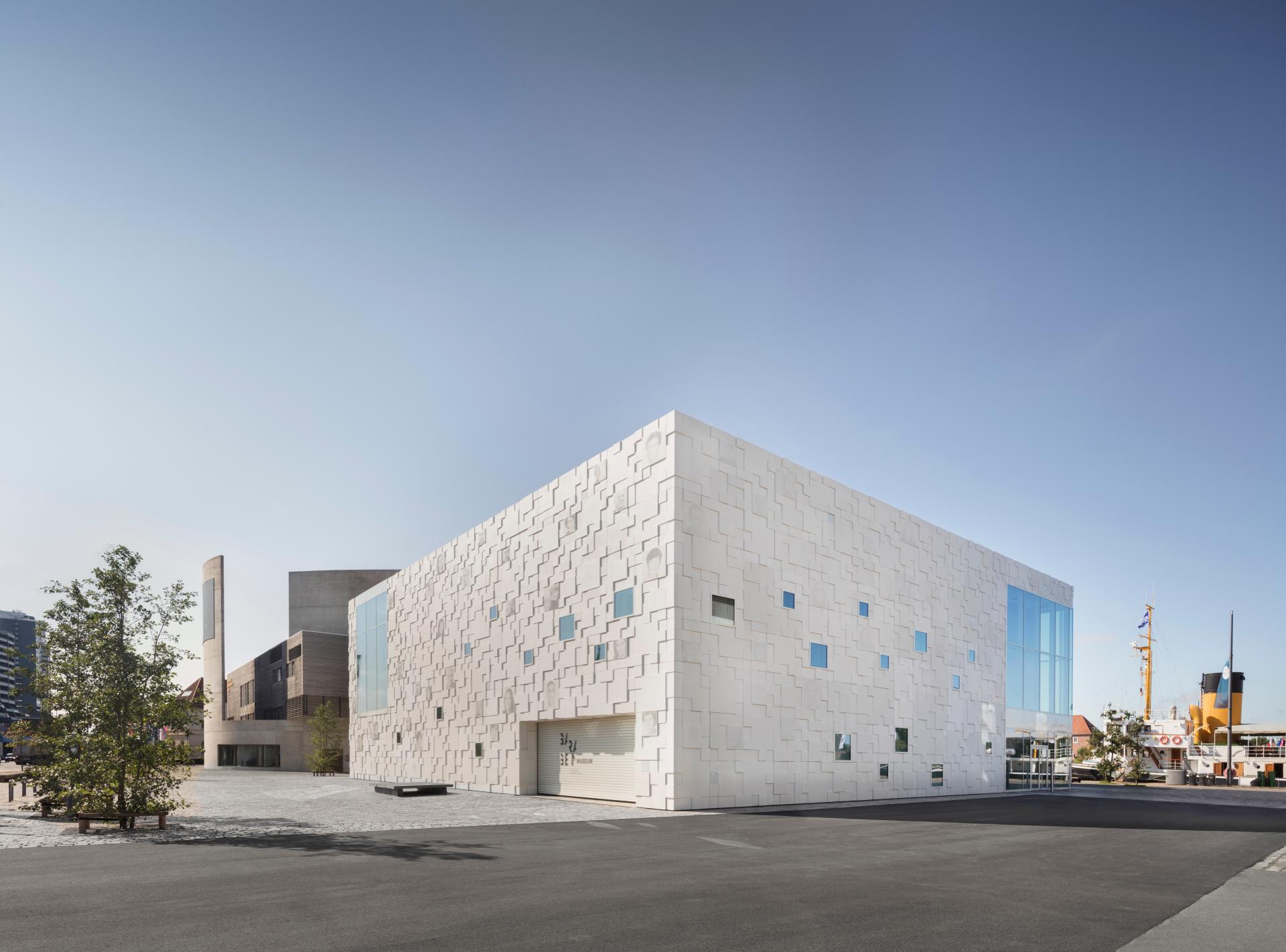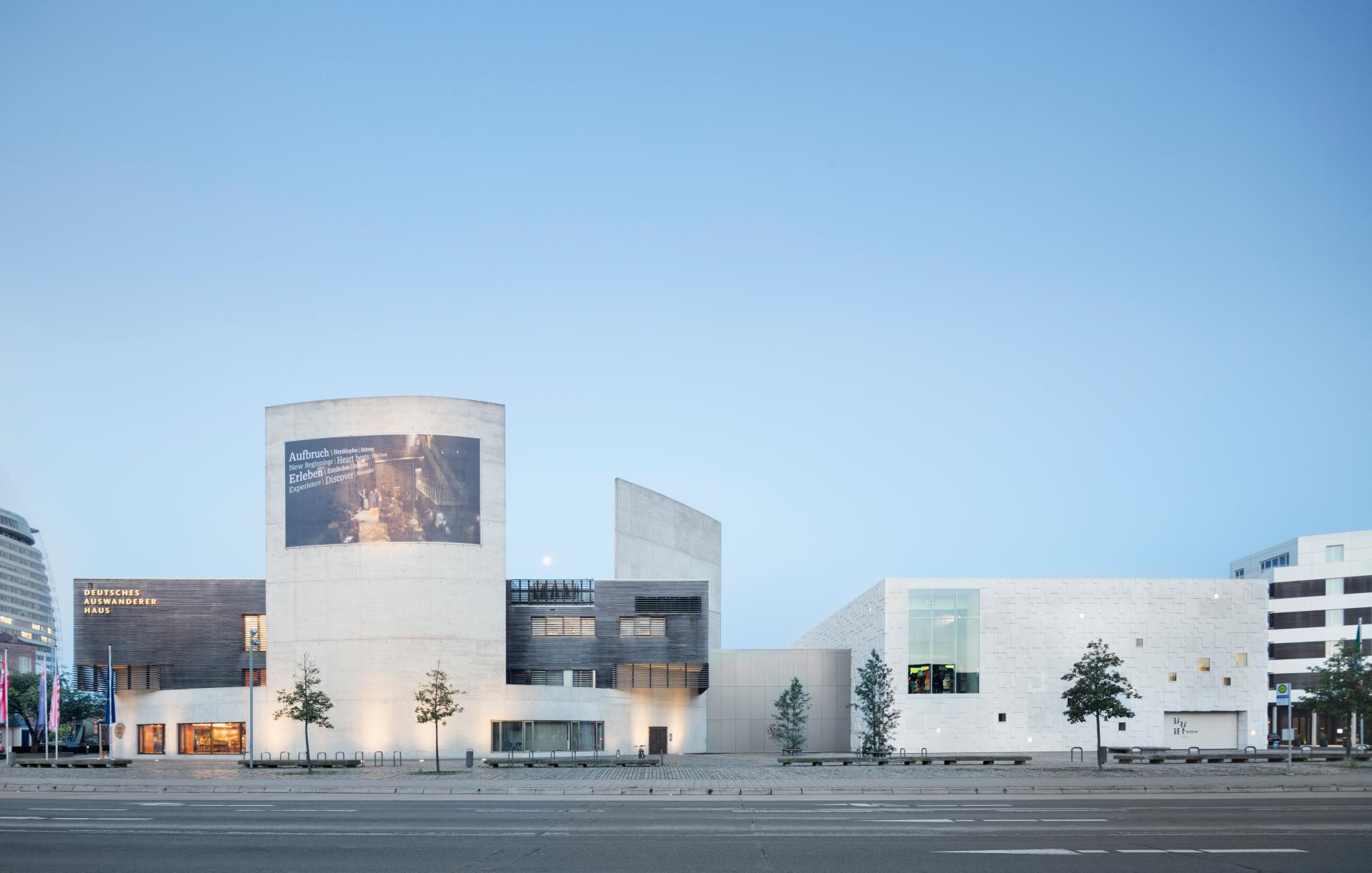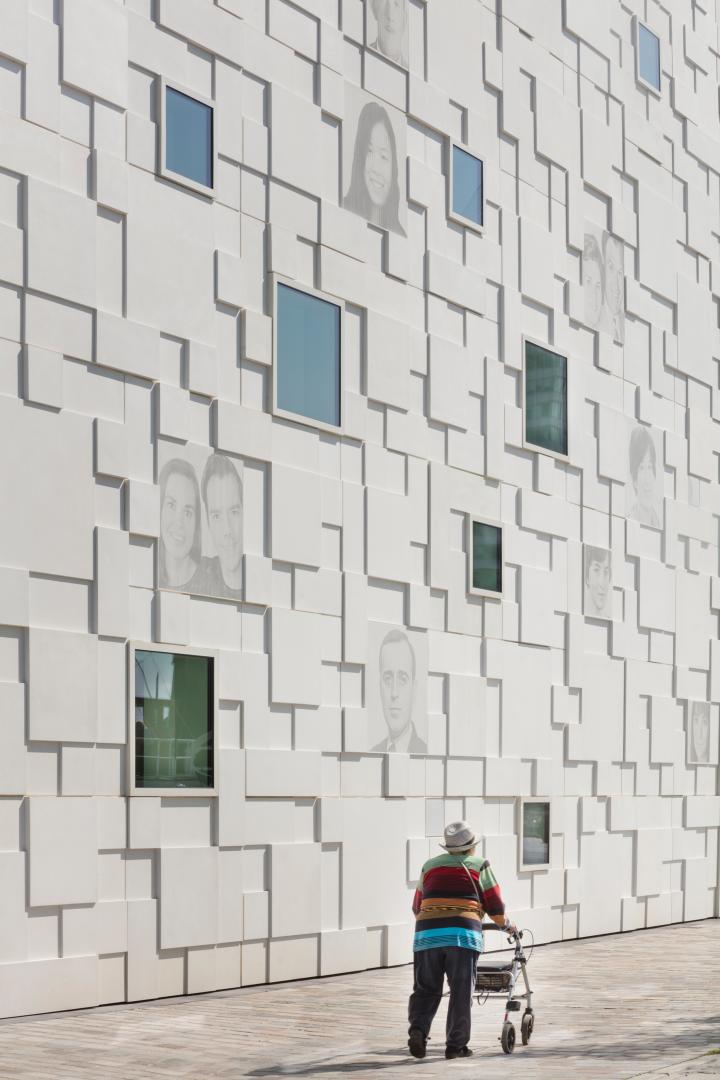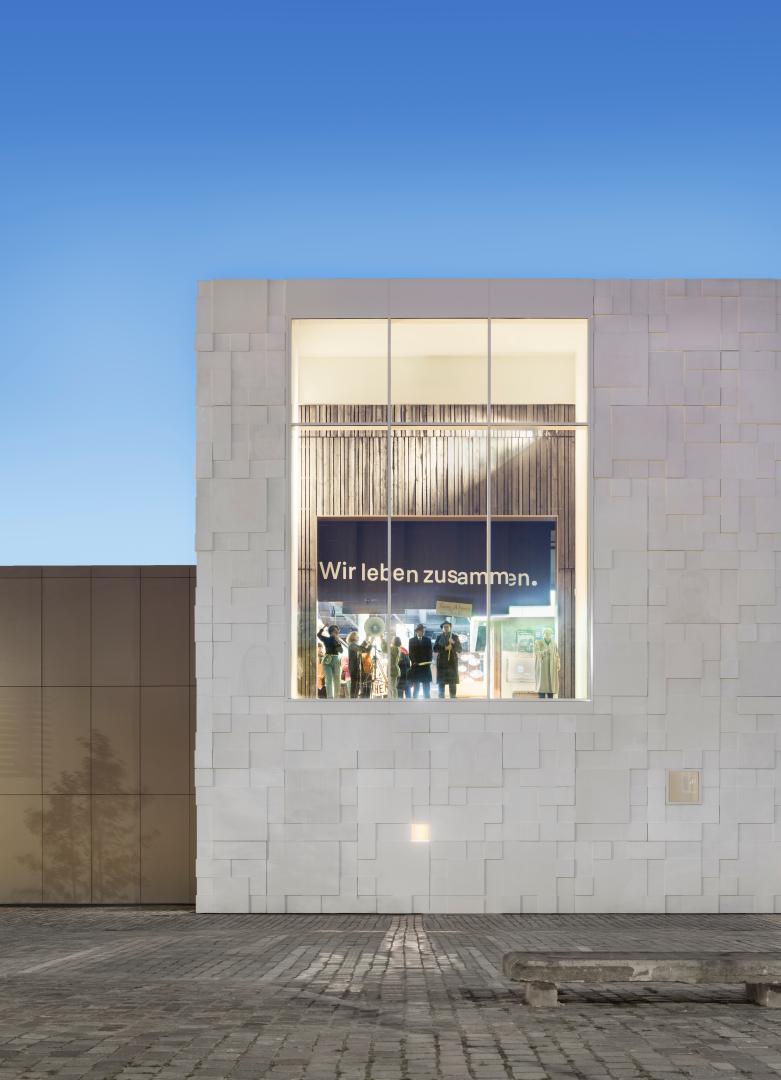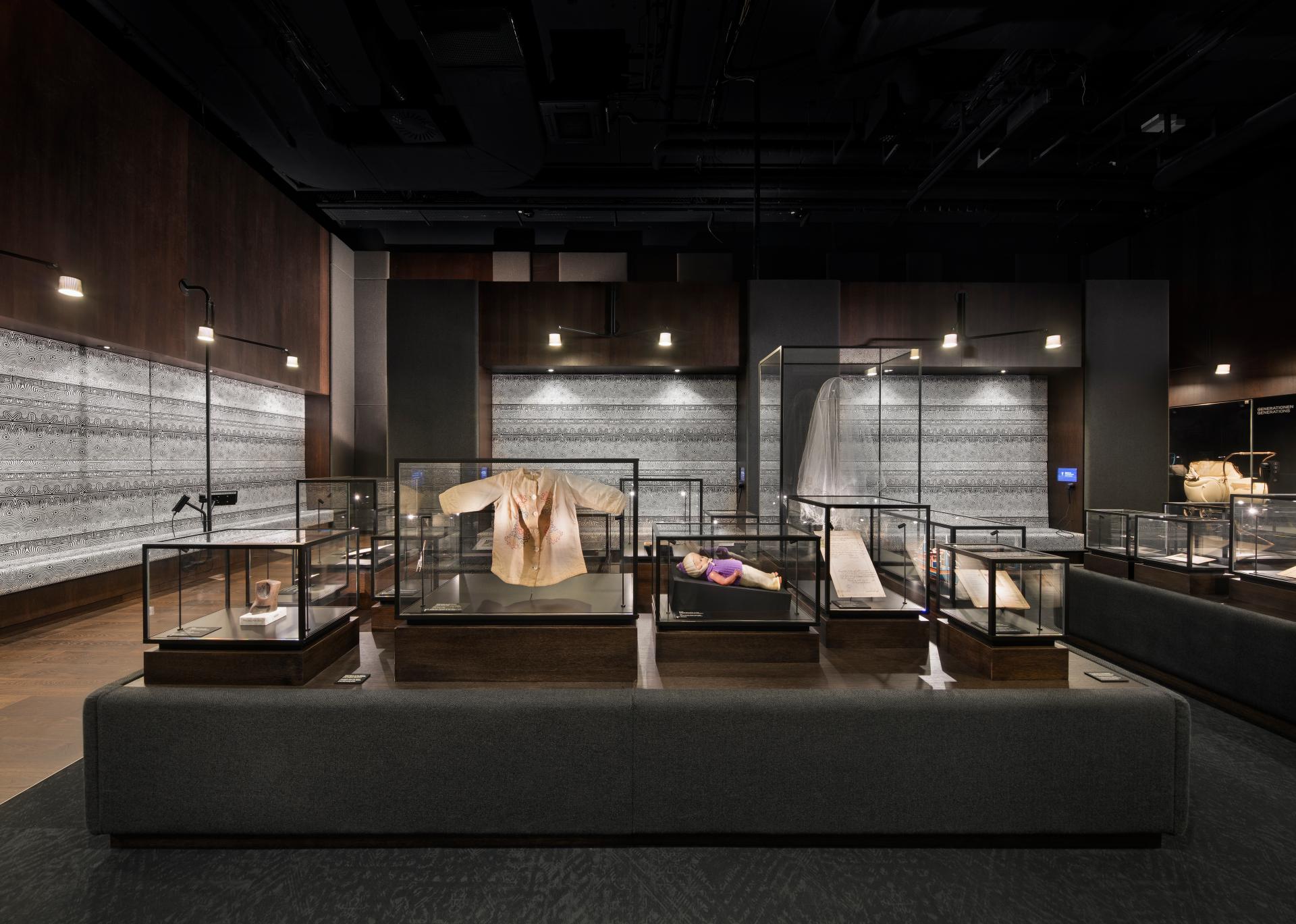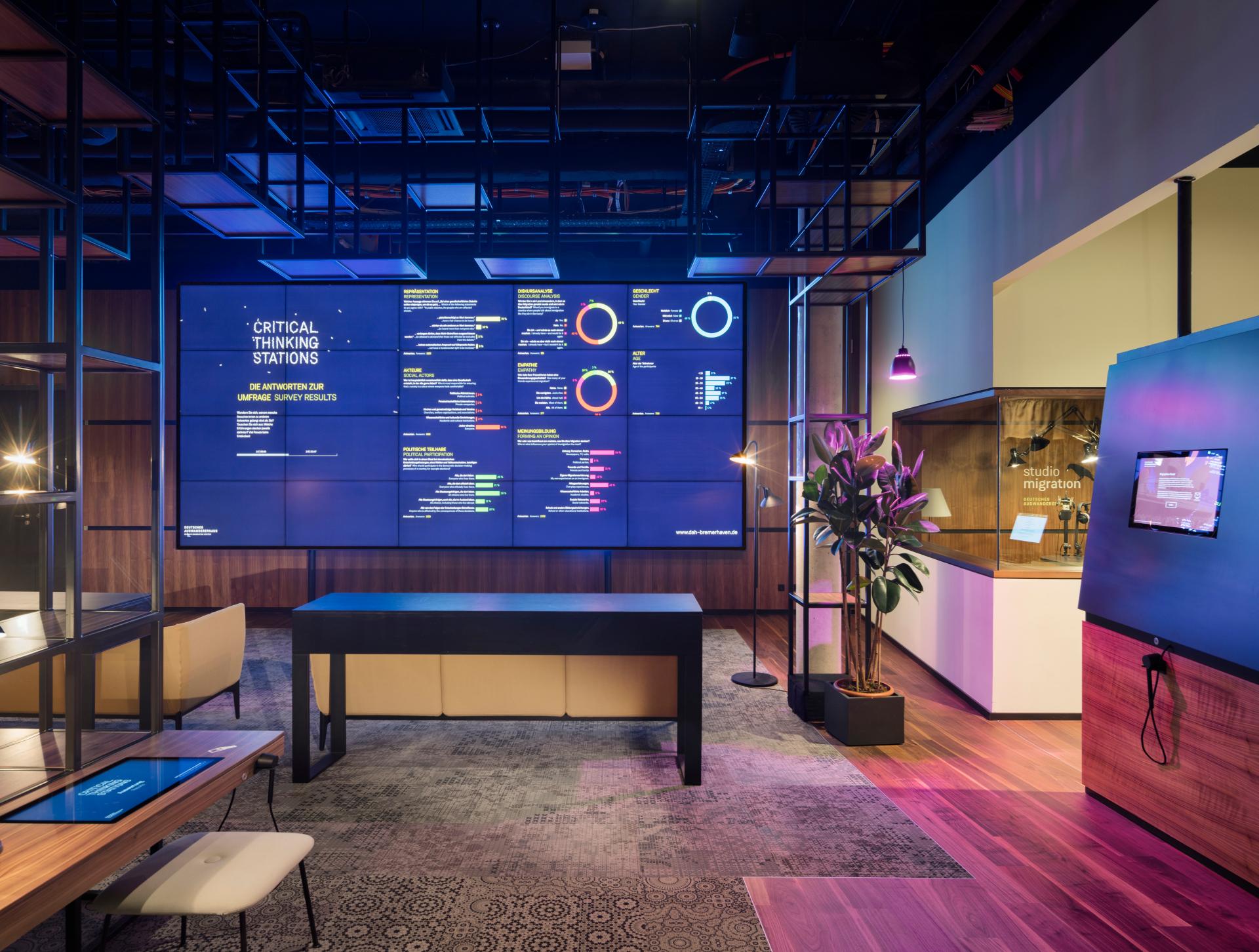German Emigration Center (extension)
Basic information
Project Title
Full project title
Category
Project Description
With a new building in 2021, the German Emigration Center sets an architectural sign for a sense of belonging for all in Germany, an immigration country. The museum ensemble shows that migration is part of our history, present and future. The new permanent exhibition with its digital spaces for thinking offers a high quality of knowledge and experience. The newly founded Academy for Comparative Migration Studies (ACOMIS) promotes sustainable participation of all in social negotiation processes.
Geographical Scope
Project Region
Urban or rural issues
Physical or other transformations
EU Programme or fund
Which funds
Description of the project
Summary
The second structural extension now presents the German Emigration Center as an ensemble of migration history in Germany. The part of the building opened in 2005 is dedicated to over 300 years of European emigration history. A bridge building now connects it with the new building. The sustainability concept for the extension is to preserve a smaller first extension from 2012 and integrate it into the new construction. This includes the old façade, which remains visible as a design element inside the new building. What is also sustainable is that the museum elevates stories and objects of migration to a cultural heritage. With the expanded collection and presentation, immigration history thus becomes part of German history. Aesthetically, the new building sets a monument to people who immigrated to Germany. A white cube with a complex layering of cassette-like concrete segments with portraits engraved into them is emblematic of the diversity of society in Germany. They are images of immigrant women, men, and children, sometimes more, sometimes less visible, depending on the incidence of light and the angle of view. They underline: Immigrants and their families belong to Germany and its history. A large “city window” provides an insight into the exhibition: "We live together" can be read there and sums up the museum's program. It is about togetherness in a modern immigration society that includes everyone. Inclusion plays a major role in the museum on other levels as well. The exhibition is barrier-free, multi-sensory, participatory and communicative. The German Emigration Center invites and supports the development of new perspectives. It encourages people to help shape coexistence in the country of immigration. Appreciation, participation, sharing and dialogue are components of the museum that create belonging.
Key objectives for sustainability
The German Emigration Center, completed in 2005, received its first extension in 2012. The basic sustainability concept for the second extension was to preserve the building from 2012 and integrate it into the new construction. This also includes the old façade, which is visible as a design element in the multi-purpose halls and the seminar rooms of the "Academy of Comparative Migration Studies". A wide variety of event formats take place in these rooms: for example, readings, concerts, lectures, exhibition projects by pupils and students, as well as lifelong learning offers for professionals. The visibility of the old façade and thus of the building's construction history symbolizes the long-term and multi-layered nature of learning and migration processes. For the new building, certified, sustainable and recyclable materials were used instead of composite materials. For the most part, these are those that are regionally available and thus do not involve long delivery routes. The design is sustainable due to resource-saving construction in the existing building stock and the integration of the existing building into the new cubature. For the newly added part of the building, certification is currently underway in accordance with the Assessment System for Sustainable Building (BNB), which is characterized by its comprehensive consideration of the entire life cycle. What is also sustainable in the new permanent exhibition is that all the stories and objects that tell migration history there have become part of the museum collection and thus cultural heritage: Immigration history thus becomes part of German history.
Key objectives for aesthetics and quality
With the new extension, a museum ensemble was realized that stands for both sides of migration. The architectural language of the buildings is derived from the contents of the museum. Thus, the existing building with its towering concrete wings carries the spirit of departure of emigration and the complex appearance of the new building with its layering of cassette-like concrete segments is a symbol of the diversity of society in Germany. The new extension building also gives immigration a face: relief-like portraits of immigrants are engraved in precast concrete elements. Depending on the incidence of light and the angle of view, they sometimes stand out more, sometimes less. The building opens up into the urban space with generous gestures. A "garage museum" offers passers-by free, constantly changing exhibitions, a large glass façade element provides a glimpse into the permanent exhibition, and large bands of windows allow insight into the scientific work of the educational and research institution "ACOMIS". The exhibition continues the experience quality of the existing building. Stagings in large room collages convey history on different levels. Museum technology supports the experience and stimulates communication. The German Emigration Center is the first museum in Europe to address both sides of migration. With a strong, architectural gesture, it underscores the relevance of the topic of immigration. With its architecture, the museum sets a lasting sign of global and universal migration phenomena. The feeling of belonging should and must be self-evident and normal in an immigration society - the German Emigration Center has set itself the goal of conveying this feeling.
Key objectives for inclusion
The topic of inclusion plays a major role in the museum on several levels. For example, local and national appeals for the façade portraits of immigrants actively invited them to participate and not only documented their stories, but also made them accessible to a wide audience, for example via the homepage. Both buildings can be visited barrier-free. The exhibition conveys its content in a multi-sensory way. The exhibition experience resembles an analog immersion, as the thematic areas are staged as walk-through spatial collages with composed spatial sounds that enhance their emotional impact. The exhibition is designed to be participatory and encourages communication about what has been experienced, discovered and learned: By means of innovative application of RFID technology, the exhibition is individualized and also allows a low-threshold, because personal access to the socially contested topic of migration. In the emigration section, a smart card is used to follow one of 18 biographies on their life's journey. In families or groups, individuals will thus experience different stories and can discover diversity in exchange. In the immigration section, the smart card serves as an interactive key that allows interest-driven selection of topics, which in turn are examined from different perspectives. The "Critical Thinking Stations" accompany the exhibition and invite visitors to explore and critically question their own opinions. Answers are stored, statistically evaluated and graphically processed in the Forum Migration for reflection. In addition to the exhibition, the newly founded "Academy for Comparative Migration Studies (ACOMIS)" is located in the extension building. It is a non-university research institution and an educational institute for museum education and lifelong learning. Children, young people and adults are taught about the history and present of integration and its significance for everyday life and society.
Results in relation to category
Bremerhaven was once one of the largest emigration ports in Europe. Today, the German Emigration Center is located at one of the former port facilities. It is therefore also an identity-forming institution for the city and the region. Today, Bremerhaven, like many other cities, is also characterized by immigration. The new extension also takes this trend into account and develops the city's identity as a place of diversity and togetherness in a modern immigration society. With the museum ensemble, a place of remembrance of departure has been transformed into a place of arrival and exchange. The museum focuses on participation and dialogue, which are created, among other things, through analog immersion - stagings in the form of spatial collages with spatial sound expand the imagination. The telling of stories by real people reinforces this aspect and enables empathy and identification. In the Hall of Debates, it is conveyed that dialogue is a fundamental principle of democratic processes. Historical debates can be examined from different perspectives. Guests' opinions are encouraged in the museum. Answers given at exhibition-accompanying "Critical Thinking Stations" are incorporated into a museum survey, which is statistically processed and presented at the end of the exhibition tour. One's own view can be reflected and compared with that of others. The conception understands people and their experiences not only as a part, but as the center of history and its conveyance. Collecting, preserving and presenting everyday stories creates a strong bond between the individual and the museum as a place of appreciation. One finds out that behind every migration experience there are human destinies. The newly founded Academy for Comparative Migration Studies (ACOMIS) in the new building is a research institution and an educational institute. It conveys a sense of belonging through the learning processes of an actively formative relationship to historical and social processes
How Citizens benefit
The German Emigration Center relies on the fact that migration is primarily based on stories of individual people and generates empathy and deeper understanding with their narration. An essential task is to collect stories and objects on the basis of which these stories can be told. A public call was launched by the museum for the portraits in the façade of the new extension. In the conception of the extension, the question of how the institution can enter into an even stronger dialogue with visitors and tie them to topics and questions was explored above all. A visitor survey is therefore an important point in the museum's work and has been incorporated into the planning. In the concept phase, an exhibition experiment was launched that was accompanied by an extensive survey of participating visitors. It was investigated which type of conveyance was better suited, that by means of original exhibits or that by means of new media, such as virtual reality. The study showed that the original continues to have a particularly strong emotional impact. On this basis, a room of biographies was designed in the new building, among other things, in which everyday objects of immigrants are presented like in a treasure chamber. Immigration stories are told on the basis of these key objects. The "Critical Thinking Stations" are another new part. Accompanying the exhibition, visitors can anonymously give their opinion. Every single answer is counted and flows into an overall evaluation, which is statistically processed and presented on a large video wall in the Forum Migration. It shows the opinion of all museum visitors, which can also serve as a basis for scientific research. This is also where the Biographies Portal is located, which links migration stories and encourages people to discover them. Via the feature "My Story", visitors are invited to enter into a conversation with museum scientists about their own history.
Physical or other transformations
Innovative character
The German Emigration Center is the first museum in Europe to juxtapose immigration and emigration on an equal footing and to present this also by means of a concise urban symbol. People are at the center of history. Therefore, the museum collects and presents the stories of migrants and their descendants together with everyday objects linked to these stories. These exhibits are presented like valuable treasures. In this way, the museum shows that each individual is significant to society, and that ultimately there is always a connected coherrent story. On a global scale, the museum shows that migration processes have always been part of humanity and recalls the great migration movements of history and their factors. Another innovative feature is the so-called “Garage Museum”, an exhibition area that can be closed at night with a roller shutter. It is an offer to the city and its citizens and presents special exhibitions on migration topics that are accessible free of charge.
Learning transferred to other parties
The concept of exploring migration on the basis of individual fates in order to make larger contexts understandable and to convey them on this basis, as well as to create a sense of belonging through participation and empathy, can also be a model for other museums. Keeping the individual in mind, making relationships tangible, and seeking dialogue are important in creating feelings of belonging in complex historical and social scenarios and an alienating everyday life. Furthermore, an exhibition experiment together with a large-scale study as well as individual surveys is a means to involve vistors and to get a basis for conceptual decisions in the choice of conveyance. It makes sense to locate an academy or similar institution at the museum to further deepen the work with the topics of the exhibition and to become a multiplier.

